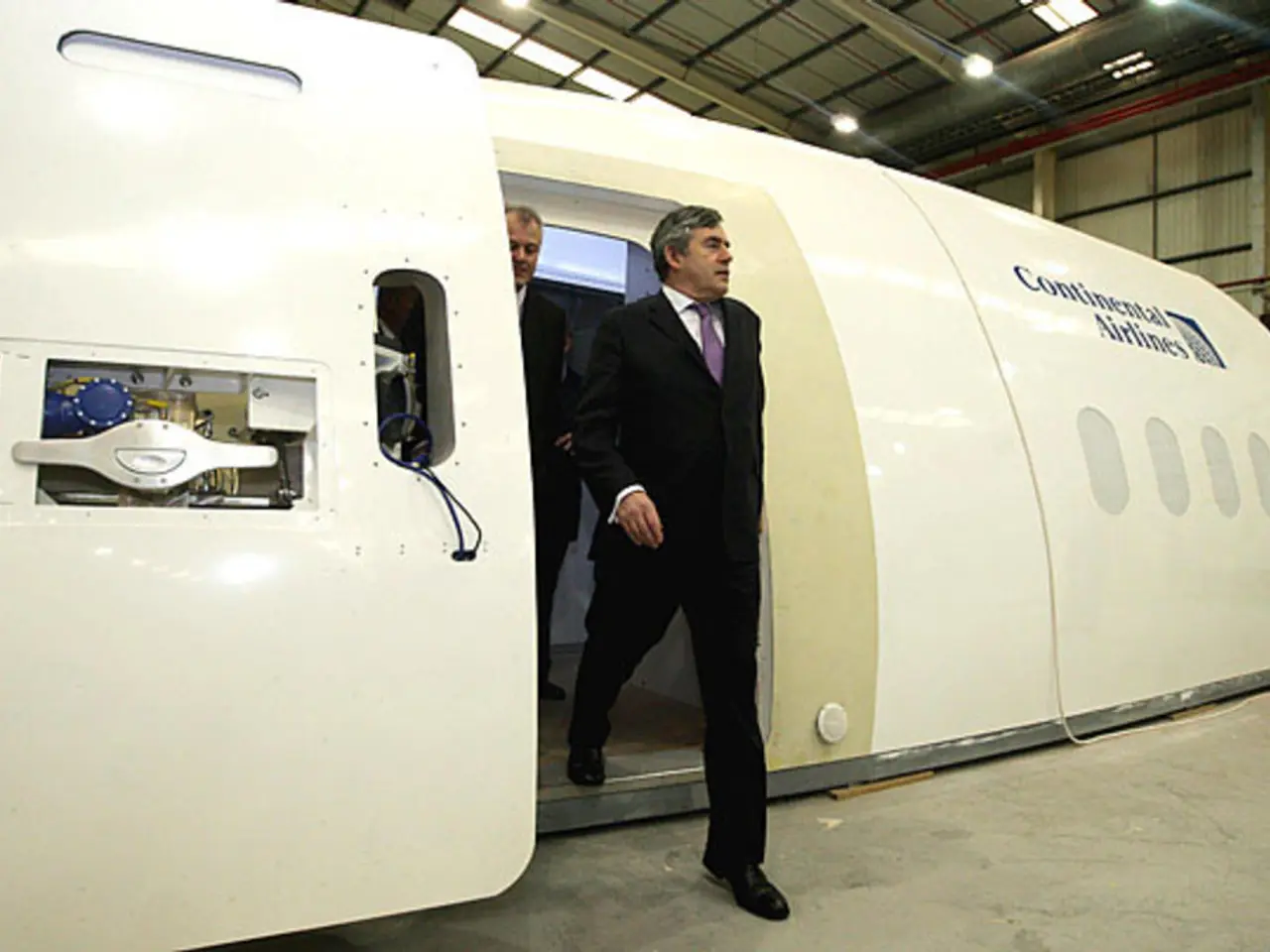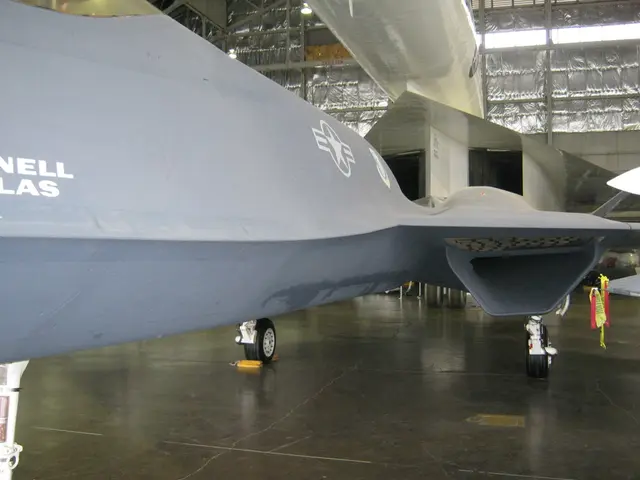Military Announcement: B-21 Stealth Bombers Could Deploy for Combat Operations, Northrop Grumman Allowed to Increase Production at Plant 42
The production of the next-generation B-21 Raider bomber is set to ramp up, with the primary expansion taking place at Northrop Grumman's Plant 42 in Palmdale, California. This strategy focuses on using existing facilities and infrastructure to maintain a stable and efficient production line, meeting increased demand without the delays associated with opening new production sites.
Key Tier 1 suppliers supporting this ramp-up include BAE Systems, Collins Aerospace, GKN Aerospace, Spirit AeroSystems, and Pratt & Whitney, which provides the engines for the B-21.
While there is discussion about the need to potentially open a second production facility to further accelerate production rates, this remains a recommendation rather than a current program update. This proposed expansion could double the output from 10 to 20 aircraft per year, boosting industrial capacity, reducing supply chain risk, and enabling meeting future demand, especially in response to strategic threats.
The Air Force's target for B-21 production is at least 100 aircraft, but specific expansion details have not been disclosed yet. The Air Force is committed to the successful fielding of the B-21 and is investing in the infrastructure necessary to support an increased yearly production capacity.
The 2026 budget request for the B-21 totals $10.3 billion, with $4.5 billion earmarked for expanded manufacturing. It is unclear whether the first two B-21s constitute initial operational capability, but the Air Force and Northrop Grumman are building the B-21 program to produce robust test aircraft that are as close to production configuration as possible.
Ellsworth Air Force Base, South Dakota, is planned to be the B-21's first operational base and schoolhouse. At least two B-21 bombers will be flying in 2026, and military construction at Ellsworth has been underway for three years to prepare for the arrival of the new aircraft.
The specific criteria for initial operational capability are classified, and it is the Air Force Global Strike Command that holds final authority on determining when the B-21 has achieved initial operational capability. The production rate of the B-21 is also classified, but it is believed to be around 7-8 aircraft per year.
The B-21 is intended to replace the B-2 and B-1 in the early 2030s, and both the Air Force and the Congress's Reconciliation bill for 2026 include funding for a B-21 production increase. Northrop Grumman took a $477 million charge on the B-21 program to cover a "process change" in production to cover "a higher production rate."
In conclusion, the production expansion of the B-21 Raider bomber will primarily be accommodated using existing facilities at Northrop Grumman’s Plant 42 in Palmdale, California, with key Tier 1 suppliers supporting this ramp-up. The Air Force is committed to the successful fielding of the B-21 and is investing in the infrastructure necessary to support an increased yearly production capacity.
| Aspect | Details | |-----------------------------|-----------------------------------------------------------------------------------------------| | Main production site | Northrop Grumman Plant 42, Palmdale, CA | | Expansion method | Using existing facilities and infrastructure | | Tier 1 suppliers involved | BAE Systems, Collins Aerospace, GKN Aerospace, Spirit AeroSystems, Pratt & Whitney | | Potential future expansion | Proposal to open a second production facility to double output is under discussion but not yet implemented | | Budget Support | $10.3 billion allocated in 2026 budget including $4.5 billion specifically to support increased production | | Initial Operational Capability | Criteria classified, Air Force Global Strike Command holds final authority | | Production Rate | Classified, believed to be around 7-8 aircraft per year | | Replacement Timeline | B-21 intended to replace B-2 and B-1 in the early 2030s | | Funding | Both the Air Force and the Congress's Reconciliation bill for 2026 include funding for a B-21 production increase | | Charge | Northrop Grumman took a $477 million charge on the B-21 program to cover a "process change" in production to cover "a higher production rate." |
- Weapons manufacturing is a key aspect of the B-21 Raider bomber production, with Pratt & Whitney providing the engines for the aircraft.
- The Air Force's air force and the industry, represented by key Tier 1 suppliers such as BAE Systems, Collins Aerospace, GKN Aerospace, Spirit AeroSystems, and Pratt & Whitney, are collaborating to support the ramp-up in B-21 production.
- The aerospace industry, including companies like Northrop Grumman and its key suppliers, is investing heavily in defense and security, with a significant portion of the 2026 budget allocated for expanded manufacturing of the B-21.
- The B-21 bomber's manufacturing process is undergoing a change to accommodate a higher production rate, as evidenced by the $477 million charge taken by Northrop Grumman.
- Aerospace, military, and finance sectors are intertwined in the B-21 program, with the Air Force and Congress's Reconciliation bill for 2026 providing funding for an increase in B-21 production.
- The Air Force's space force also plays a role in the B-21's development and deployment, as Ellsworth Air Force Base, South Dakota, is planned to be the B-21's first operational base and schoolhouse.
- The B-21's production and security are of utmost importance, as the specific criteria for initial operational capability are classified and the production rate is also classified, but believed to be around 7-8 aircraft per year.








